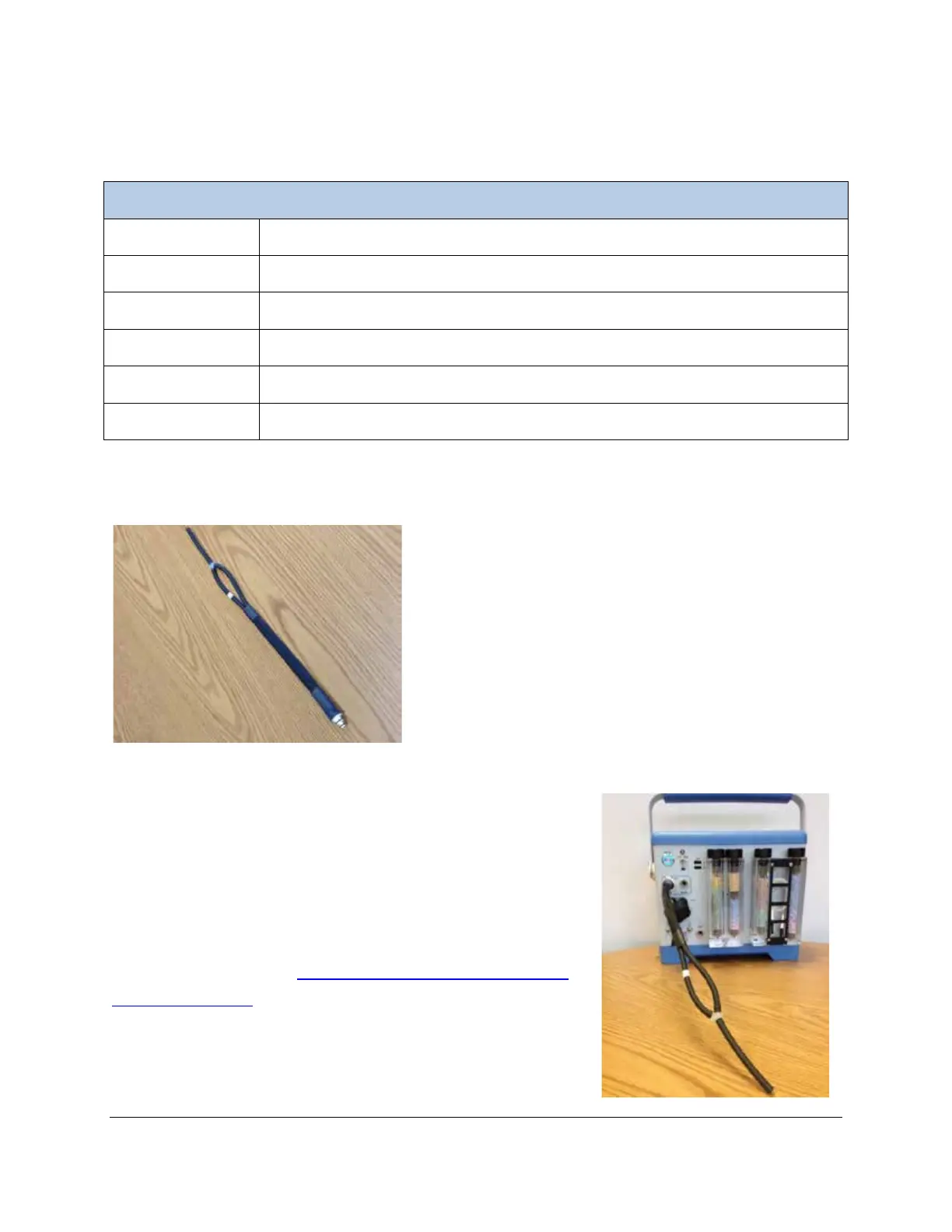CIRAS-3 Operation Manual V. 1.09 194 support@ppsystems.com
When the leaf cuvettes are not in use, remember to leave the cuvette head open to avoid compression of
the leaf gaskets.
PLC3 Universal Gaskets, 18 mm diameter (Qty. 10)
PLC3 Universal Gaskets, 25 mm x 18 mm (Qty. 10)
PLC3 Universal Gaskets, 25 mm x 7 mm (Qty. 10)
PLC3 Universal Rear Gaskets, 50 mm x 35 mm (Qty. 10)
PLC3 Narrow/Conifer Gaskets, 88 mm x 40 mm (Qty. 10)
Checking For Leaks Associated With the PLC3
How do I know if there is a leak in the system? Good
question. If you have the leaf cuvette closed with no leaf
present, you should observe a CO
2
differential (CO2d) close
to 0 (± 0.5 µmol mol
-1
and stable). If your CO2d is this and
fluctuating this usually is the result of a leak. To help isolate
the leak and to determine if the leak is associated with the
CIRAS-3 console or the PLC3, we include a simple “Leaf
Cuvette Simulator” (Part No. STD553) with each new system
that can be very helpful.
To checks for leaks, connect the cuvette simulator to the PLC Gas
port on the CIRAS-3 console as shown here to the right. This will
allow you to sample the same air in both the reference and analysis
cells of the infrared gas analyzer. When the simulator is connected
to the CIRAS-3 you should observe stable CO2r, CO2a, H2Or and
H2Oa readings and the CO
2
differential (CO2d) should be close to 0
(± 0.5 µmol mol
-1
and stable). For more information on checking for
stability and leaks, refer to
Checking Stability - Before You Place a
Leaf in the Chamber on page 70.
If you observe a CO2d value close to 0 and stable with the Leaf
Cuvette Simulator and you do not when the PLC3 leaf cuvette is
connected to the CIRAS-3, the leak is likely associated with the
Simulator

